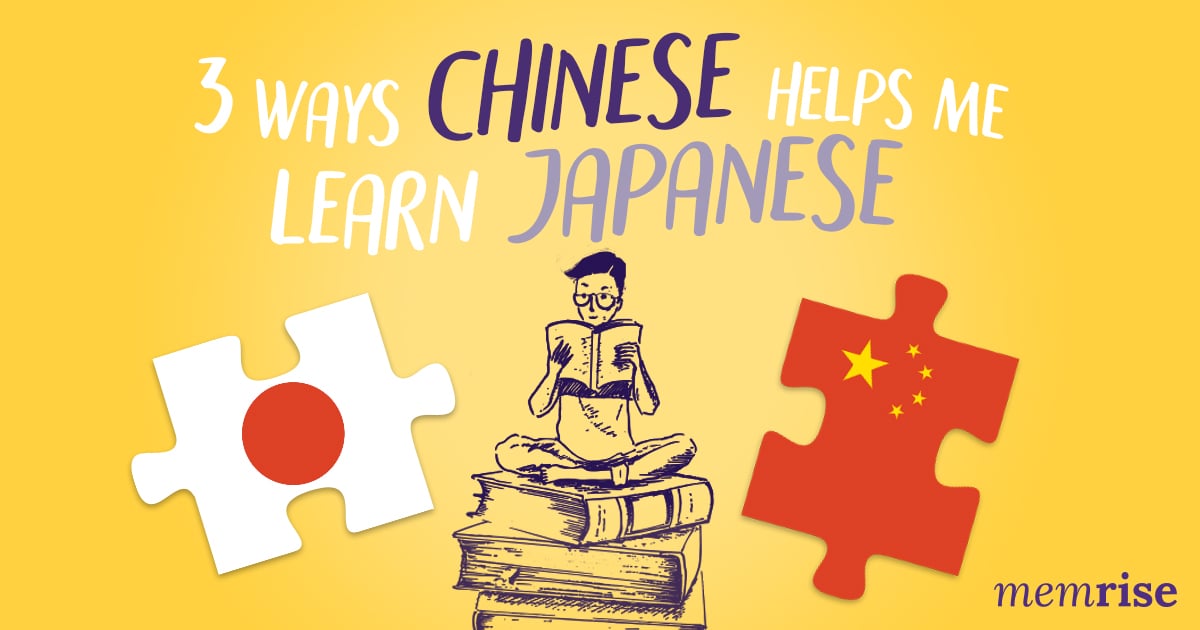During my last two years of school around ten years ago, I was lucky enough to be able to study Japanese and then in my final year, I picked up Chinese too. Both of these courses gave me a good grounding in each language but I wouldn’t have been able to say that I spoke either one above A2 level.
Since then, I have studied Chinese at university and lived in China, and can now speak Mandarin without any problem – I also managed to pick bits and pieces of a few different Chinese regional languages such as Minnan, Chongqingnese and Cantonese.

By the time I joined Memrise I thought my Japanese knowledge was long gone. What little I thought I knew was slowly eroding away from those dark, cobweb-filled corners of my mind where I store words, grammar, and random language facts that I never use. But since then, my interest in Japanese has been very much rekindled for many reasons. For one, lots of my friends and colleagues are learning Japanese, and also Memrise’s Japanese specialist recently started learning Chinese.
From answering Kana’s questions about Chinese, and working on various projects involving Japanese, I have noticed that there is a lot of crossover between these two languages.
1) Hiragana & katakana come from Chinese?! Whaaat?!
You might need to put down some newspaper, ’cause things might get a bit messy when I blow your mind with this little fact bomb. Hiragana and katakana weren’t created out of thin air, but they were actually adapted from the cursive versions of various Chinese characters. Check out this super interesting article (in Japanese) if you want to read more about the history of the Japanese writing systems. As soon as I found this out I not only found it much easier to remember hiragana and katakana, but I also improved my handwriting by imagining that they were cursive Chinese characters.

2) Bring on the kanji!!

Firstly, my knowledge of Chinese allows me to read and understand a lot of Japanese sentences and guess at what they mean even when I might not have the foggiest idea of how to say them. Let’s check out this example:
怒っているのは、お腹が空いているからです。/因为我饿了所以我生气。
(Okotteiru-nowa, onaka-ga suiteiru-kara desu. / I am angry, because I am hungry.)
In this sentence, all three kanji also exist with more or less the same meaning in Chinese, these also happen to be the three key words in the sentence: ‘怒/angry’, ‘腹/stomach’ and ‘空/empty’. So even if I couldn’t read any of the hiragana, I would still be able to make a wild guess at what it means. And knowing a little bit about Japanese grammar just fills in the missing gaps. I know that the “-ている/teiru” describes a continuous action or a state, and “-から/kara” means ‘because’ – so I can easily guess the correct meaning of the sentence.

来年の2月に帰国する予定です。/明年2月我打算回国。
(Rainen-no nigatsu-ni kikoku suru yotei desu. / I plan to return to my country next February.)
Having kanji in sentences, reading Japanese feels familiar and less daunting even when they might be different from their Chinese equivalents. For example, in Modern Mandarin, you would most likely say 明年 (next year) instead of 来年 (the coming year), and the Japanese character 帰 (to return) is a mix of both the traditional Chinese 歸 and the simplified 归 making this sentence quite an easy sentence to guess the meaning of even if I might have no idea how to read it aloud.

3) Hmm… I wonder how to pronounce that
In point 2, I said that I ‘might not have any idea of how to pronounce’ a kanji in Japanese, and although that is often true, you can often make a good guess. And those guesses only get better the more you learn, and the more patterns you begin to spot.
For example, the Japanese words for ‘weather’ and ‘telephone’ are ‘天気’ (tenki) and ‘電話’ (denwa), the same as ‘天气/天氣‘ (tiānqì) and ‘电话/電話‘ (diànhuà) in Chinese. So in Japanese ‘気‘ is pronounced ‘ki‘, just like ‘气/氣‘ in the Minnan dialect of Chinese! OK, so maybe you don’t know any Minnan, but did you spot the pattern with 天 ‘ten – tiān’ and 電/电 ‘den – diàn‘? This little rule might not work for all characters, but there are lots of little helpful patterns like this that will help you learn and even sometimes guess the pronunciation of new Japanese kanji that you learn!
I hope these three tips will help you in your own language learning adventures, whether you’re learning Japanese, Chinese, both, or even Swahili or Arabic! 加油 and 頑張れ!


Rob is Memrise‘s English Language Specialist, teaming up with the other language specialists to create language courses that will help you explore the world by unlocking your language superpowers. He also works with Memrise‘s Marketing Team to make fun videos and blog posts to inspire all the language learners out there.
In his spare time, he can usually be found learning languages – currently Hindi & Greek – and exploring the wonders that the London theatre and comedy scenes have in store.









